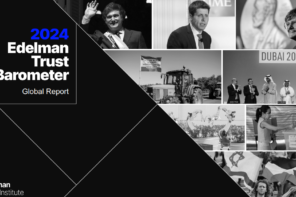
Wednesday August 30, 2023
Building Trust with Transparency: A PR guide to creating a corporate culture of trust
Workplace transparency has emerged as a pivotal factor in shaping organisational culture and employee engagement. This practice nurtures an environment of open communication, trust, and accountability when executed effectively. When workers perceive clear and open communication in the workplace, their level of engagement improves. Such employees also experience a remarkable 12-fold increase in job satisfaction compared to those who feel their organisation lacks transparency.
Given that job satisfaction directly influences employee retention rates, we can deduce that transparency is a key driver. However, what exactly does transparency in the workplace entail? And are there only advantages to it, or are there potential drawbacks too?
In this blog post, we will explore the benefits of transparency and its drawbacks.
Firstly, What Does Workplace Transparency Mean
Workplace transparency is a fundamental principle that fosters candid and open communication between organisational leadership and employees within a work environment. This commitment is characterised by leadership’s willingness to openly share a range of vital aspects, including expectations, achievements and errors, challenges, feedback, financial metrics such as revenue, and other pertinent information that influences the direction and performance of the company.
In reciprocation, employees pledge to actively engage in the dialogue by seeking clarifications, posing questions, and sharing their own feedback, insights, challenges, and innovative ideas. This two-way exchange forms the foundation of an innovative culture where information flows freely, trust is nurtured, and a collaborative spirit thrives, ultimately contributing to a more engaged, informed, and empowered workforce. Employees who understand the big picture are more likely to align their efforts.
A Balancing Act
Achieving transparency in the workplace requires a delicate balance. While openness is essential, excessive communication can lead to information overload, causing confusion rather than clarity. Organisations must consider the relevance, timing, and frequency of their communications to strike the right balance.
Transparent communication should be purpose-driven, aligning with the organisation’s values and objectives. If the company is in financial trouble, should this be communicated or not? Will it trigger a fatal decline in the company as employees start looking for other jobs, leaving the company vulnerable? Transparency must be balanced with safeguarding sensitive information.
Organisations should clearly determine what information is suitable for sharing and what must remain confidential, as internal news can become external news in an age of sharing. Many corporate reputations have been damaged as an internal employee memo leaked to the media or social media and taken out of context.
Good Practice
Transparent communication includes regular town hall meetings, where senior leaders engage with employees to share company updates, address concerns, and solicit feedback. Ensuring the town hall is two-way communication is key as it creates a forum for transparency exchanges. Leaders should own up to their mistakes as it creates a learning culture as others feel empowered to share their failings, which colleagues can learn from in a storied format. When informed about company performance, milestones, and challenges, employees feel a sense of belonging. These updates foster trust and engagement.
Open-book financial management is another manifestation of transparency, where organisations share financial performance data with employees. This practice fosters a sense of shared responsibility and enables employees to understand the financial implications of their daily efforts. Sharing information on payscales helps build trust in fair pay and root out bias.
Honesty in communication where facts are not obfuscated and inconvenient truths are not hidden. Bringing difficult subjects to the fore will win the trust of stakeholders as they realise they do not have to have their guard up when they consume company information. Over time, with transparency, employees will learn they do not need to develop a critical gaze, and the company will develop a ‘one team’ culture rather than an ‘us vs. them’ toxic dynamic.
As you continue your journey towards transparency, remember it’s an ongoing process. Regular feedback loops, active listening and an unwavering commitment to earning trust will ensure that transparency remains a fundamental pillar of corporate culture.
Curzon PR is a London-based PR firm working with clients globally. If you have any questions, please feel free to contact our Business Development Team bd@curzonpr.com







Follow us